E-learning learning that can be used in schools [Part 1]
E-learning learning that can be used in schools [Part 1]
It's been a while! I'm Kitaoka in charge of marketing🍎.We are now in the last week of June. The weather is unstable all over the country, and there is a big temperature difference in some areas, so many people may be sick. The hot summer is almost upon us!
Again. learningBOXI will do my best to bring you, the reader, useful e-learning in school education through!Those who are interested in e-learning but don't know how to use it in real life!Please refer to the article in this paper and let's think about how to use and utilize e-learning together!
Content
- --[Part 1] This time! --
- 1. unraveling a string from an example
- 2. goal setting
- 3. let's make learning materials
- 4. divide by subject
- -- [Part 2
- 5. learningBOX account registration
- 6. group settings
- 7. grade management settings
- 8. summary
Unpacking the string from the example
This time, let's consider e-learning learning that can be expected and used in the field of education, using "Tatsuno Taro," a teacher who teaches social studies at a junior high school, as a hypothetical setting. In this article, we'll use the teachers' problems and how they teach their students as an exercise in e-learning, and we'll move on!
Basic Information

Taro Tatsuno: teaches third grade social studies
Tatsuno Taro's PC level
Computer-related knowledge is at the level of gathering information on the Internet. No programming knowledge. Computer operation is at the level of being able to create documents using Word, Excel, and PowerPoint.
Taro Tatsuno's problems
(1) There is a lot of variation in scores between classes.
(2) It is practically difficult to provide study guidance tailored to each individual.
(3) You spend most of your work time creating materials for classes and tests.
(4) High expectations and pressure from parents
5) Students' interest in social studies is low and their motivation to learn is low.
There are many teachers in the field of education who have these problems. They are required to achieve the best results within a set time frame, and the workload and responsibility for each teacher is high, and many of them are suffering physically and mentally. In addition to teaching students their studies, teachers also have to deal with work outside of their duties, school events, and relationships with parents, and they are often in a low, boardroom position. Those who have club activities or are in charge of classes and grades are probably even busier.
Based on Tatsuno Taro's troubles...How to create a learning environment that reduces the burden on teachers and raises students' awareness of their studies through e-learning, andOur learningBOXto actually start learning e-learning with us!

goal setting
mission
(i) To improve students' knowledge and motivation to learn.
(2) Propose and create study methods that suit each individual's level
(3) Reduce the time spent on creating materials
(iv) Gaining the trust of schools and parents.
(5) Getting people interested in social studies through e-learning
Let's quickly create a design in learningBOX that can satisfy the above conditions (1) to (5).
Let's make learning materials.
If you try to create learning materials with the big word (concept) of social studies, the entrance is too wide and you will not know where to start. Let's start by narrowing the scope and genre of the material, then gradually broaden the scope of study and improve the quality of the content.
Recommended problem creation procedure
The first step is to divide them into sub-items, middle items, and large items.
When the number of small problems increases, organize the information by medium items (groups and categories).
When the number of medium items increases, divide them into large items and complete the composition.
image drawing


Let's actually make teaching materials with learningBOX!
Major Topic: Social Studies
Middle item: 1) history, 2) geography, 3) civics, etc.
Subtopics: 1-1 Japanese History, 2-1 Japanese Geography, 3-1 Japanese Social Structure...etc.
Here's the quiz I made.
10 questions about Japanese history →.historical (event)
10 questions about Japanese geography →.Geography Question
10 questions about Japanese society →.Social Issues
General problems →.combined problem
Test questions close to the real thing →.Test Run

Click here to see the difference between Normal Mode and Master Mode.
Features of learningBOX
(1) Problems are easily created with excel and text. If you are a first time user, we recommend you to use "Question Form".
(2) Multi-functional question format
(3) Images and videos can be inserted.
4) URL links can be embedded in the commentary.
5) By using optional functions, you can perform tests closer to the production.
▼ The quiz creation feature has a wide variety of quiz types and functions.
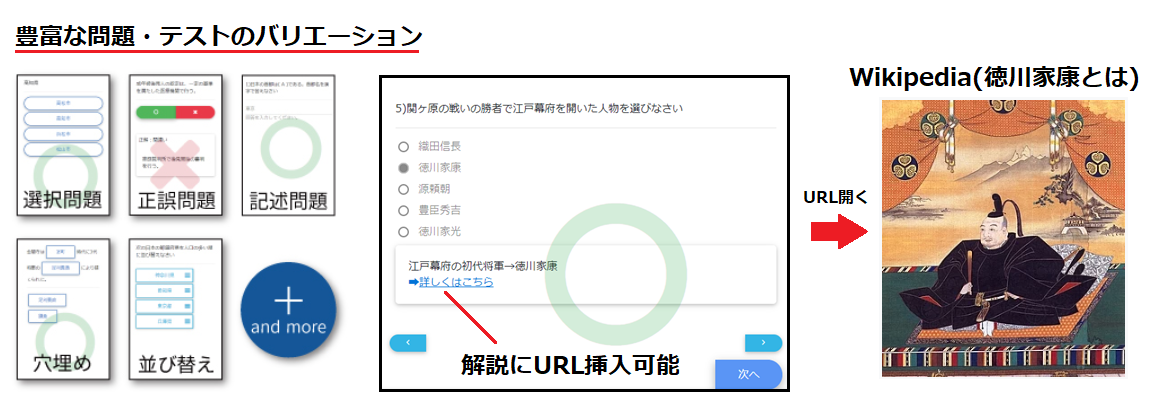
You can also embed ▼ section functions and videos.
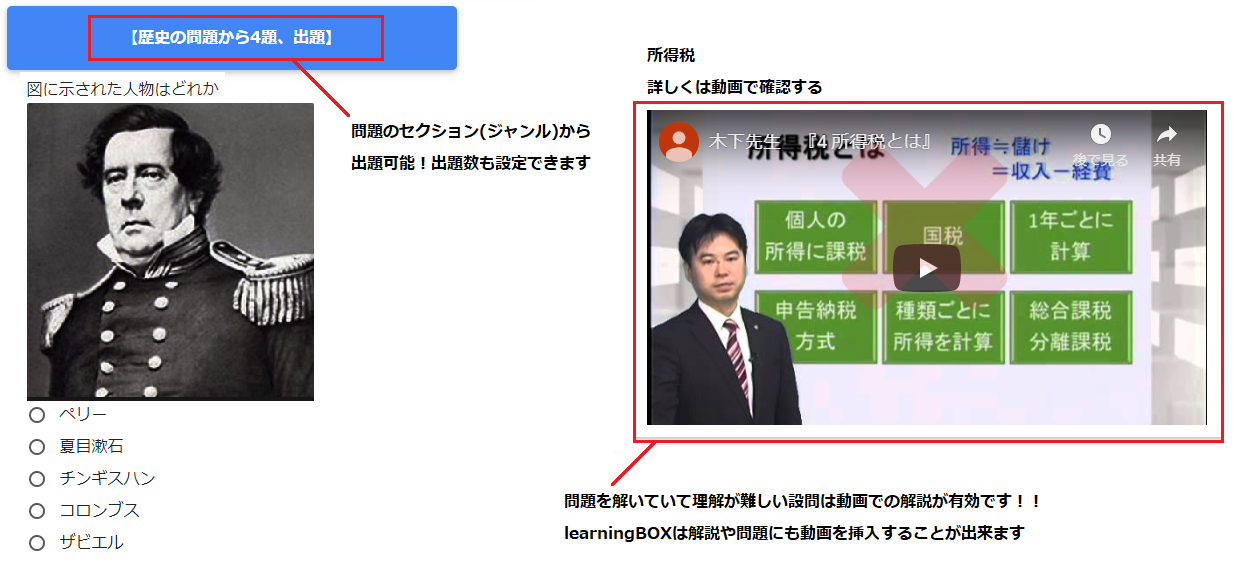
Separate by subject
Organize the materials you created above into folders.
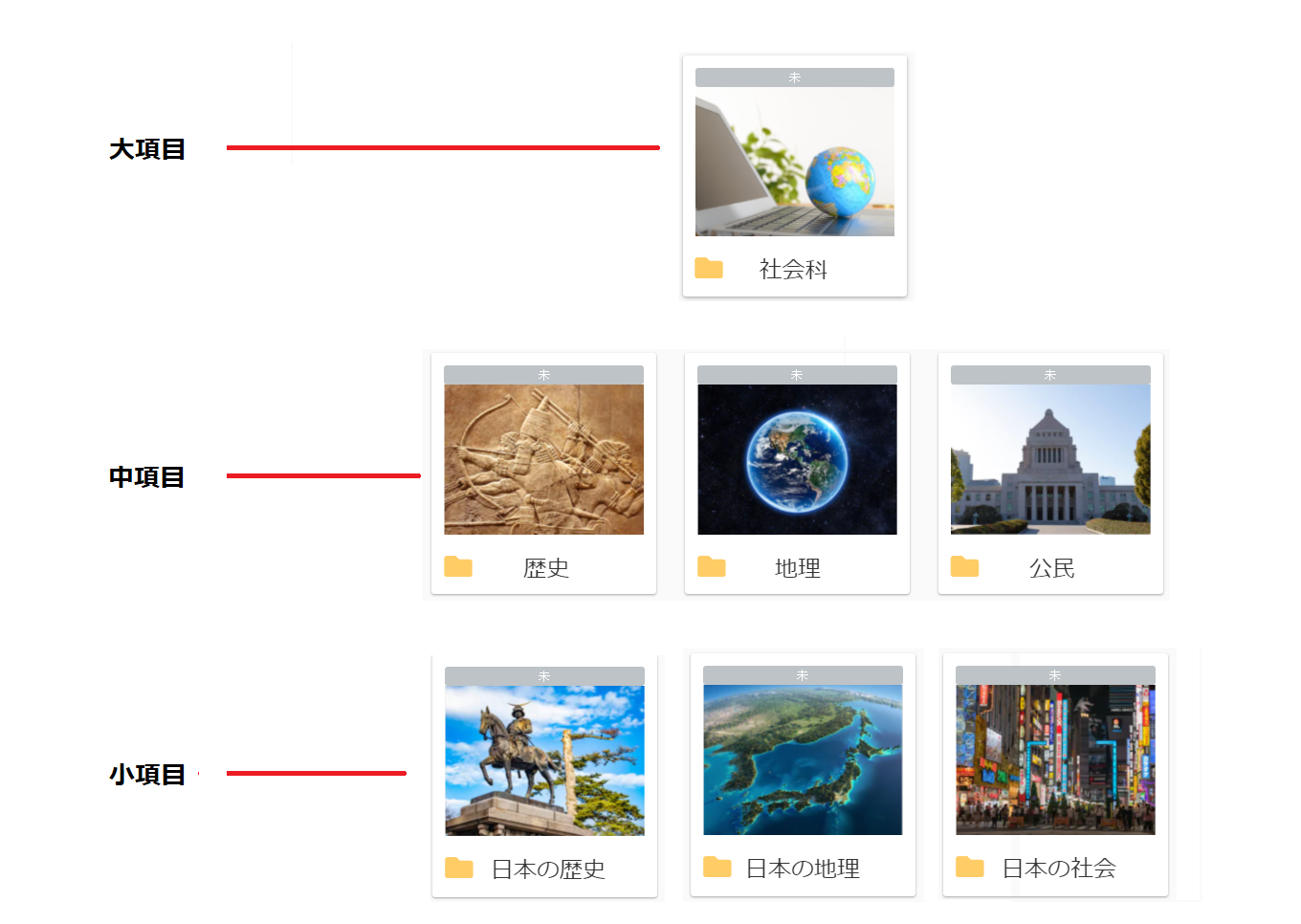
Learning control features to aid in course design
Prerequisites can be set by using the constraint bar in the content feature. There are two types of constraints, answer or view all questions and materials above the constraint, or pass all questions and materials above the constraint. By using this constraint bar, you can setLearners are able to follow the steps efficiently.
Limiting the number of courses to meet your objectives
By setting a limit on the number of lessons, you can make them take up to a specific number of lessons. Tension and concentration, which are difficult to stimulate in regular classes, will be greatly improved!
Materials can be assigned to each group.
Depending on the level of your students, you can assign each group the material you want to distribute!
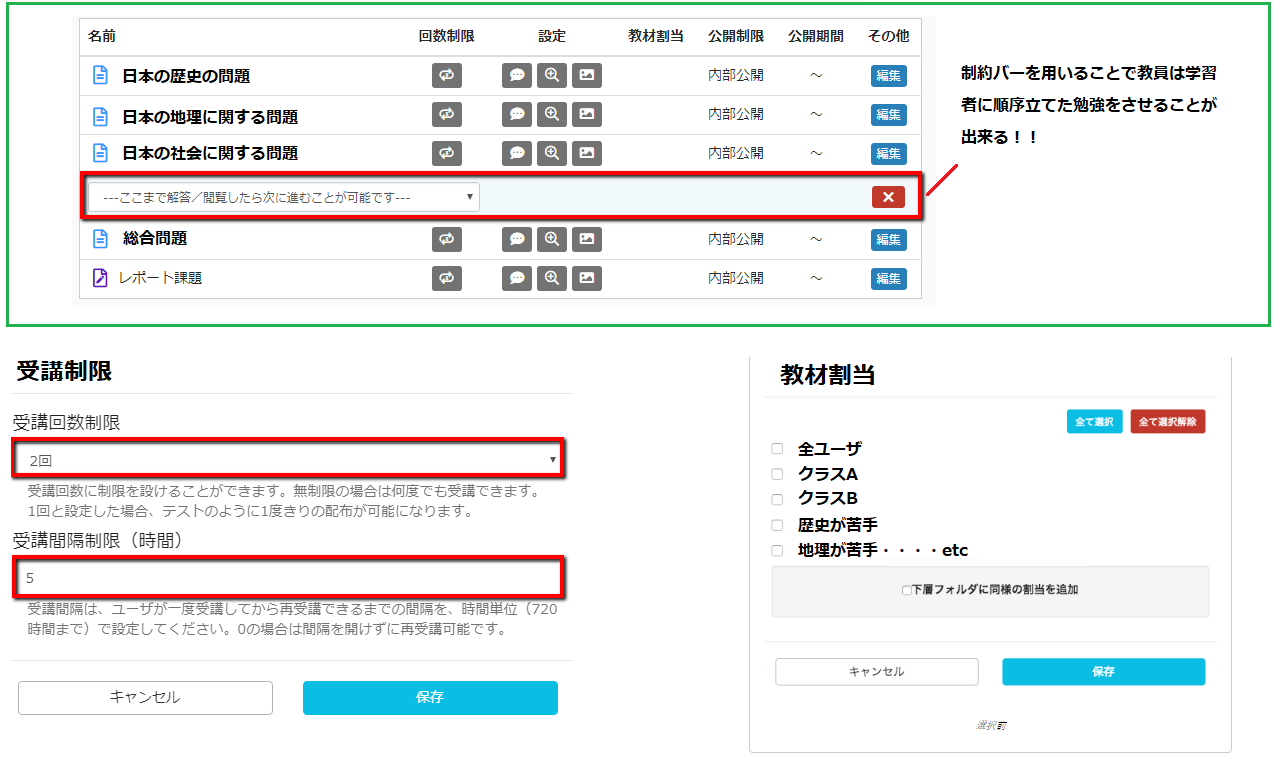
Summary of the first part
This story is going to be a long one, so I'll break it up here. In the first part of this article, we used learningBOX as an example to propose a learning method, create teaching materials, and divide problems that could be used in e-learning based on Tatsuno Taro's problems. What do you think about the e-learning using this learningBOX that we introduced this time? Wasn't it a fresh and new way to study, different from the textbooks, notebooks, and printouts that are currently used in schools and educational facilities? Study methods will continue to evolve with the times. The "quality of education, flexibility of teaching methods, and education that meets the needs of the times" that we want and need may have entered a turning point.
In the second part of the lecture, we will talk about how to manage and register the results based on the learning environment created by learningBOX. If you are interested in e-learning, but have been hesitant to take the first step, or have almost given up because the operation method seems difficult! Let's convert your anxiety into expectation with our learningBOX! I look forward to seeing you again in the second part of this series! Thank you very much for watching.
Comment ( 0 )
Trackbacks are closed.



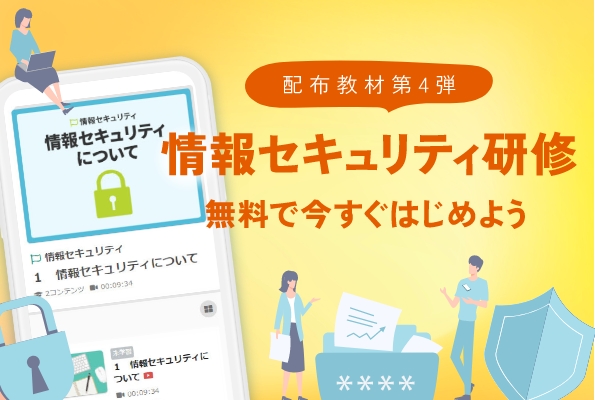
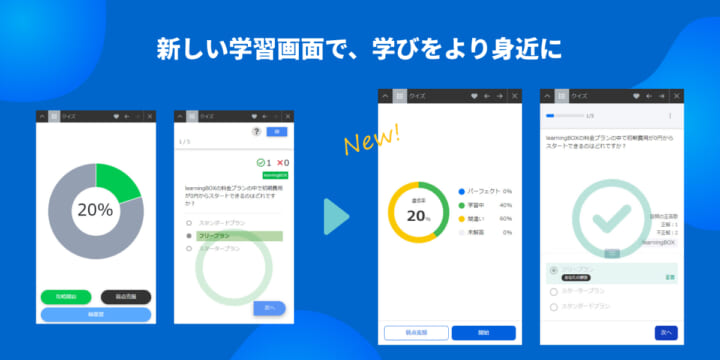

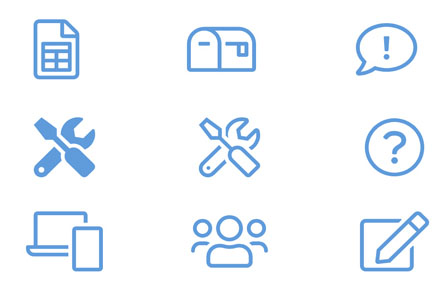

No comments yet.